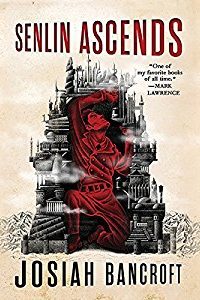Paul Di Filippo reviews Ben Marcus
 Out of all the forms of fiction, surely allegory is the hardest to bring off successfully. If the subtextual parable is too dominant, too overwhelming and up front, then all naturalism is lost, and the characters are rendered lifeless, their actions clockwork, all to hammer home an arid lesson. If, on the other hand, the symbolism is too understated and obscure, then the fiction is all just plain mimesis, one- or two- or three-dimensional, deep and/or entertaining as the case may be, but still without any satisfying metaphorical layers: there’s just a vague, subliminal irritating buzz of lost meaning that refuses to resolve. Crafting a book that features the lifelike skin of a compelling naturalistic story clothing the skeleton of complex metaphor is an alchemical trick.
Out of all the forms of fiction, surely allegory is the hardest to bring off successfully. If the subtextual parable is too dominant, too overwhelming and up front, then all naturalism is lost, and the characters are rendered lifeless, their actions clockwork, all to hammer home an arid lesson. If, on the other hand, the symbolism is too understated and obscure, then the fiction is all just plain mimesis, one- or two- or three-dimensional, deep and/or entertaining as the case may be, but still without any satisfying metaphorical layers: there’s just a vague, subliminal irritating buzz of lost meaning that refuses to resolve. Crafting a book that features the lifelike skin of a compelling naturalistic story clothing the skeleton of complex metaphor is an alchemical trick.
Luckily, science fiction lends itself more than other genres to good allegories, since the reification of metaphors is part of our essential toolkit.
With The Flame Alphabet, Ben Marcus has pulled off that exact wizardly stunt, with brio and panache. He’s created a novel that’s full of essential speculative estrangement—the surface narrative—but one which also conceals a multivalent subterranean (in one sense, literally subterranean!) allegory about time, human generations, individualism, interpersonal and societal communications, and nonhuman modes of epistemology and being.
Michael Chabon’s early blurb for The Flame Alphabet compares this book to Ballard, and the comparisons are deserved. Looking at a book like Ballard’s The Drowned World, with its hypnotic surface plot draping a meditation on existential challenges and the role of man in nature, one sees the model for what Marcus has attempted and brought off. And in fact, given the conceit of Marcus’s book—language, human-vocalized sounds and writing, as instruments of death—one wonders if the initial seed of his novel was not a very specific Ballard story, “The Sound-Sweep,” which posits a tangibility to noise much in line with Marcus’s novel.
We open in the “realtime” of an extraordinarily changed world, experience a long, long flashback that explains how the world got to its current state, and then resume the ongoing narrative, a very effective scheme. Furthermore, the book breaks neatly into two labeled halves (with a small, surprising coda). The first half focuses on the intimate and personal aspects of the apocalypse, while the second half examines Kafkaesque bureaucratic responses (without abandoning the private hearts). And the whole tale is delivered in the beautifully idiosyncratic voice of one tortured man, a fellow named Samuel, married to Claire, father to Esther.
Marcus’s MacGuffin is that the speech sounds of children suddenly acquire lethal power, sickening all adults (anyone older than eighteen) who hear them. Dinner-table conversations become deadly assaults, no less so when self-centered youngsters begin to revel in their lethality. Eventually, even adult speech and written text acquire the taint. Once understood, the plague (and echoes of Camus’s famous novel are here) causes the collapse of civilization, as despairing families are wrenched apart, with the ailing adults, still loving their kids, unable to do more than ineffectually quarantine a handful of cases. Feral packs of adolescents roam the ruins, gleefully assaulting adults, while at the mysterious Forsythe Institute, under the supervision of a mad genius named Le Bov, mute adults strive to recreate a language fit for the new conditions.
Compounding this scenario is the mysterious religion that Samuel and Claire belong to. They are “Forest Jews,” practicing their lonely rites in isolated huts that tap chthonic murmurings and instructions from unknown sources. This mystical technology—reminiscent of some anachronistic novelty dreamed up by cartoonist Ben Katchor—will come to play a part in the researches of the Forsythe Institute, and Samuel will exhibit powers above the norm.
Much of the strength of this novel derives from its rigorous, knowing use of some SF “power chords” (to employ Rudy Rucker’s critical terminology). The generational mutation theme harkens to pure Midwich Cuckoos/Bad Seed/X-Men tropes, but receives a great new twist. Likewise, an amped-up On the Beach/Day of the Triffids ambiance suffuses the book. But Marcus patinas all this with unique horrific visuals akin to glimpses out of a Bosch or Brueghel or Chris Mars painting. “On a bird-strewn incline I came upon women pulling a cart up a footpath. The tarp thrown over their cart so clearly covered the bulges of people.” His wasted adults (and the resemblance of their condition to that of AIDS and Alzheimer’s sufferers is part of the allegory) are some new species of humanity, a fresh take on the radiation-scarred victims of yesterday’s tomorrows, while his deadly kids are the post-literate Internet generation turned monstrous.
And as fitting for a book with such a theme, Marcus’s inventive, hypnotic language—knotted and convoluted, alternately banal, poetic and scientific, contorted by the conditions and by Samuel’s awkward prickly persona— emerges as a character in its own right.
Although a grim journey, The Flame Alphabet is not without its mordant humor: “Gesture was tested, mostly on the sick, to see how rapidly they would expire if exposed to unceasing and explicit mime.” But it is required reading to help us understand all the pathologies of our contemporary plague of deadly language and willful incomprehension.








Pingback:SF Tidbits for 1/26/12 - SF Signal – A Speculative Fiction Blog